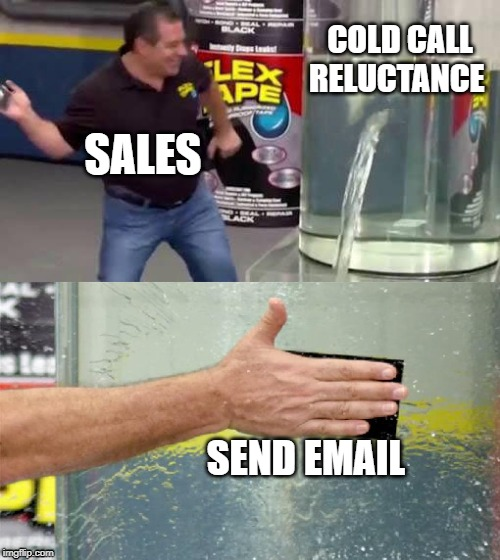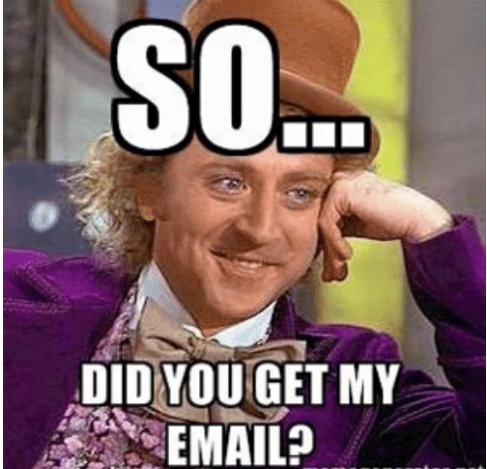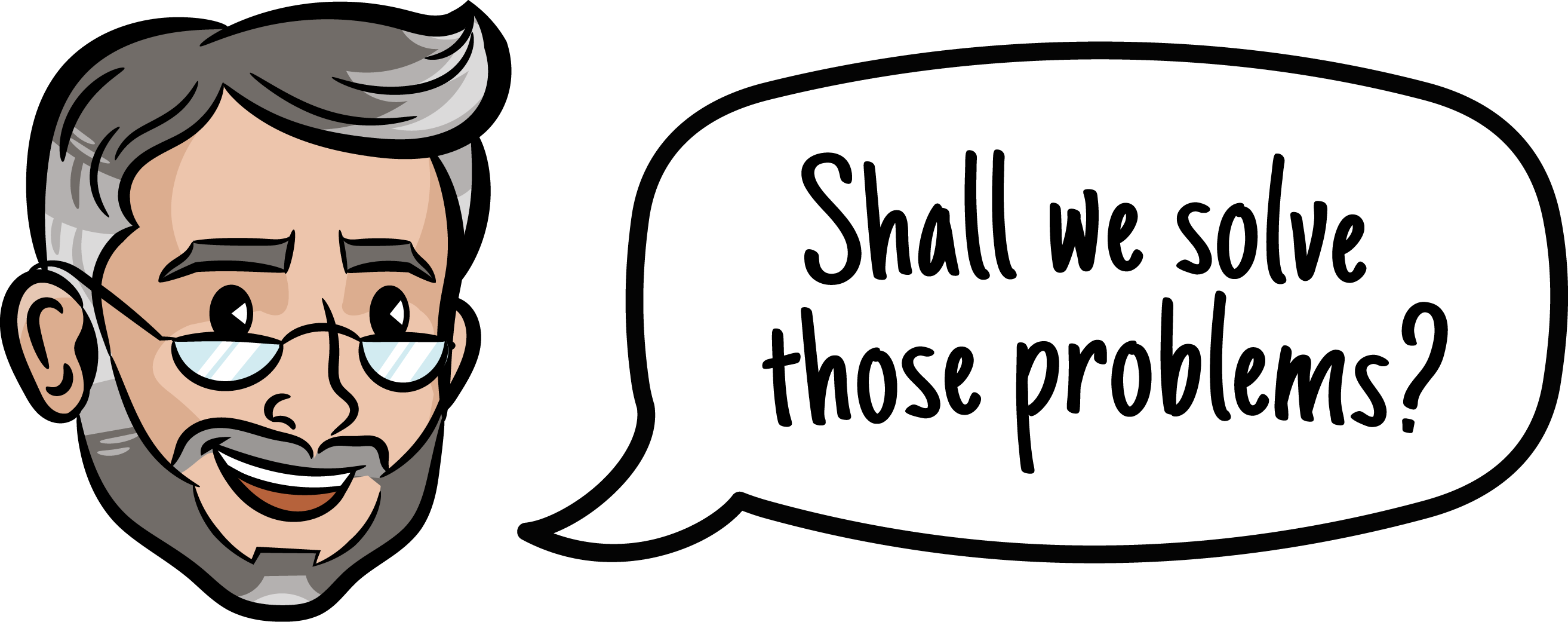In the intricate dance of modern sales, cold emails remain a pivotal step, often misunderstood and underutilized as you can be very precise with who you contact. Conducting a conversion funnel audit is essential for uncovering bottlenecks and optimizing the user journey from initial interest to final purchase.
This powerful tool, when wielded correctly, can open doors to untapped markets and unexplored opportunities. However, the challenge lies in breaking through the noise and capturing the attention of your potential customers in a world inundated with digital communication.
This article aims to demystify the art of cold emailing and set the stage for more effective ABM or account-based marketing use in moving leads down the sales funnel. We will explore proven strategies, best practices, and innovative approaches to transform your cold emails from mere digital missives into potent catalysts for sales funnel progression.

Understanding Cold Emails in the Sales Funnel
At its core, a cold email is an unsolicited email sent to a potential customer who has had no prior interaction with the sender. It’s akin to a digital cold call, but unlike its telephonic counterpart, it allows for a more thoughtful and less intrusive approach.
Many people new to email marketing think their message or the approach overall is a failure if responses don’t come back on the first email. Reach the definition of one and done to get a better understanding of this rookie mistake. Closed-Won in sales and marketing refers to a stage in the sales process where a sales opportunity has been successfully converted into a customer sale.
Cold emails (lots of them in a row) are a critical tool in the initial stages of the sales funnel, particularly in the ‘awareness’ and ‘interest’ phases. They serve as the first point of contact, aiming to spark interest and nudge the recipient towards the next stages of the funnel – consideration, evaluation, and ultimately, conversion.
The sales funnel, a model that depicts the journey of a potential customer from first contact to final sale, is a multi-staged process. It starts with ‘awareness,’ where the potential customer becomes aware of a solution or a need. This is where cold emails can shine, introducing your product or service to prospects who might not even realize they need it.
The next stage, ‘interest,’ is about piquing the curiosity of these prospects. Here, your recipient is already “warmed up” and emails can be tailored to highlight how your offering addresses their specific problems or needs.
As we move down the funnel to ‘consideration’ and ‘evaluation,’ the role of email shifts. It’s no longer just about making an introduction; it’s about nurturing the lead, providing more information, and addressing concerns or questions. This is where BANT (Budget, Authority, Need, and Timeline) becomes a crucial framework for qualifying leads. By addressing these four elements within your email sequence, you can ensure that you’re focusing on prospects who are not only interested but also in a position to move forward in the sales process.
The final stage, ‘conversion,’ is where the lead makes a decision.
While cold emails are rarely used on go-to-market strategies where the deal might close on a single touch, they lay the groundwork for this final step, setting the stage for more direct sales tactics.
In essence, cold emails are the starting blocks in the race of the sales process.
They are the initial handshake, the first step in building a relationship with potential customers.
When crafted with care and strategy, cold emails can effectively move leads through the initial stages of the sales funnel, setting the foundation for a successful sales journey.

Professor’s Note
Cold emailing can be a great tool to reach prospects who aren’t actively searching for solutions, but don’t think you can ignore your website and other public credibility elements.
If someone is interested in what you had to say, they’re highly likely to check your website and they won’t respond if they don’t like what they see.
Crafting the Perfect Cold Email
The art of crafting a cold email that resonates and elicits a response is akin to striking the right chord in a symphony of communication. It’s about blending personalization, a compelling value proposition, and an attention-grabbing subject line into a harmonious message that speaks directly to the recipient.
- Personalization: The cornerstone of an effective cold email is personalization. It’s about going beyond the generic ‘Dear Sir/Madam’ and tailoring your message to the recipient. This involves researching your prospect, understanding their business challenges, and referencing specific details that show you’ve done your homework. Personalization demonstrates respect for the recipient’s time and an understanding of their unique needs, significantly increasing the chances of your email being read and responded to.
- Value Proposition: Your cold email should clearly articulate what you can offer – your value proposition. This isn’t just about listing features of your product or service; it’s about highlighting the benefits and solutions it provides to the recipient. Your value proposition should answer the question, “What’s in it for them?” It should be concise, compelling, and focused on addressing the recipient’s specific challenges or goals.
- Subject Lines: The subject line is your email’s first impression, and often, the make-or-break factor in whether your email is opened. It should be intriguing yet clear, creating curiosity while giving an indication of the email’s content. Avoid clickbait tactics; instead, aim for subject lines that are relevant and offer value. Personalizing the subject line, using the recipient’s name or a reference to their business, can also increase open rates.
- Avoid Attachments – While you might have a lovely sales slick or deck at your disposal, modern email servers tend to be friendlier to inbound email addresses once their client has corresponded with that person. If you use an attachment on a cold email, you’re likely to trigger a SPAM blocker.
Engaging Leads at Different Funnel Stages
As leads move through the sales funnel, your cold email strategy should evolve to match their changing needs and levels of engagement.
- Awareness Stage: In this initial stage, your goal is to spark interest and educate leads. Your emails should focus on introducing your brand and the problems you solve, without a hard sell. Use brief storytelling or case studies to illustrate how you’ve helped similar businesses rather than kitchen-sinking features. The content should be informative, engaging, and relevant to the recipient’s industry or challenges but also short.
- Consideration Stage: As leads enter the consideration stage, they are actively thinking about solutions to their problems and likely responding to you. Here, your emails can get longer and should provide more detailed information and social proof. Now you can include attachments such as whitepapers, detailed guides, testimonials, or case studies that demonstrate the effectiveness of your solution. The key is to establish credibility and show that you understand and can address their specific needs.
- Decision Stage: In the decision stage, leads are close to making a purchase decision. Your emails should encourage taking action, such as trying a demo, scheduling a consultation, or taking advantage of a limited-time offer. The messaging should be more direct, emphasizing the urgency and benefits of acting now. It’s also important to make the next steps clear and easy, reducing any friction in the process of moving from a lead to a customer.
Measuring and Optimizing Cold Email Campaigns
The success of cold email campaigns hinges not just on the content of the emails but also on how well they are received and interacted with by the recipients. Measuring and optimizing these campaigns is a continuous process, involving the analysis of key metrics and the implementation of strategies for improvement.
Modern CRMs use a piece of tracking code called a “pixel,” which loads when an email is opened and sends back a signal to the sender’s software. In HubSpot you see these results in the Activity tab and can see them aggregated on the metrics for sequences (strings of emails that can be automated to go out until a response happens).
Open Rates and Click-Through Rates: Open rates indicate how many recipients are opening your emails, while click-through rates (CTR) show how many of those who opened emails also clicked on hyperlinks in the email, such as to more information on your website. These metrics are crucial indicators of the effectiveness of your subject lines and email content.
To improve open rates, focus on crafting more personalized and compelling subject lines. For enhancing CTR, ensure that your email content is relevant, engaging, and includes clear calls-to-action. Also, segmenting your email list can help in tailoring content more specifically to different groups, potentially increasing both open rates and CTR.

- A/B Testing: Experimenting with different elements of your emails can provide valuable insights into what resonates best with your audience. This can include testing variations in subject lines, email copy, the layout of the email, or different calls-to-action.
When using sequences, you can set them to split 50/50 among subject lines and give you the results. By comparing the performance of these variations, you can identify the most effective elements and incorporate them into your future emails.
- Follow-Up Strategies: Follow-up emails are a critical component of a successful cold email campaign, but they must be done tactfully to avoid being intrusive. Best practices include waiting a few days between follow-ups, keeping the message brief and to the point, and adding value with each follow-up, such as sharing a relevant resource or piece of information. It’s also important to know when to stop; if a recipient hasn’t responded after several follow-ups, it may be time to put the them in a “nurture” sequence, where they only hear from you once every couple of months.
Overcoming Common Cold Email Challenges
Cold emailing is fraught with challenges, but understanding and addressing these can significantly improve your campaign’s effectiveness.
Addressing Low Response Rates and Avoiding Spam Filters:
Low response rates can often be attributed to emails not reaching the inbox or failing to engage the recipient. To avoid spam filters, ensure your email list is clean and up-to-date, avoid using spam trigger words in your email content, and maintain a good sender reputation. To improve engagement, personalize your emails, provide clear value in your messaging, and make sure your emails are mobile-friendly.
Legal Considerations and Adhering to Email Marketing Regulations:
It’s crucial to comply with email marketing laws such as the CAN-SPAM Act in the United States, GDPR in Europe, and other regional regulations. These laws typically require that you have permission to email the recipients, include a clear way to opt-out of future emails, and provide accurate sender information. Ensuring compliance not only avoids legal pitfalls but also helps in maintaining the trust and confidence of your recipients.

Professor’s Note
Many AI-based solutions claim to be able to write emails for you. Be warned that even if your writing isn’t perfect, you’re much more likely to get a response if you write your own emails.
Authenticity carries a ton of weight, especially when bots and sequences have been around for over a decade.
Once you get your first response, you should strongly consider communicating in your own voice.
Tools and Resources
To maximize the effectiveness of your cold email campaigns, leveraging the right tools and software is essential. These tools can assist in creating, sending, and tracking your emails, providing valuable insights and efficiencies.
- Email Outreach Platforms: Standalone mass email tools like Mailchimp, SendGrid, and Constant Contact offer robust solutions for newsletter-style email campaign management. They provide features for email design, automation, and list segmentation, making it easier to manage and personalize newsletters, although they all frown on true cold emailing as will ban you if too many recipients report your emails as SPAM.
If you’re wanting to send “personalized” emails en masse, you’ll want a tool with cadences or sequences. You’ll set up a string of emails that you want each prospect to get over a period of two weeks, for example. Each day, you start that string of emails on a new list of prospects who receive emails designed to look they were handwritten.
If you’re using a HubSpot sales funnel, this tool is called “sequences” and is part of their sales automation suite: “Sales Hub.” You put dynamic fields for first name, etc. and it automatically inserts the correct name before sending each email.
- CRM Integration: Integrating your email campaigns with a CRM system like Salesforce or HubSpot can be incredibly beneficial. If you practice good CRM hygiene, these platforms allow you to track interactions with each lead, helping you tailor follow-up emails and manage your sales funnel more effectively by automatically adjusting lead scores, creating follow-up tasks, and adjusting fields based on how close each contact is to a potential purchase.
If your overall sales and marketing stack is optimized, you’ll be able to see open rates and clicks, but also what pages were visited on your site after those clicks happened. If you want to be really granular, integrate Hotjar and HubSpot and you’ll be able to watch DVR recordings of your visitors as they browse your site.
- Analytics and Tracking Tools: Understanding how your emails perform is crucial. Platforms like Campaign Monitor and MailerLite offer detailed analytics on open rates, click-through rates, and conversions. This data is invaluable for optimizing your campaigns.
- A/B Testing Software: Tools like Optimizely or VWO can be used to conduct A/B testing on your emails. They allow you to test different versions of your emails to see which elements resonate best with your audience.
- Email Verification Services: Services like NeverBounce or Hunter.io help ensure your email list is clean and up-to-date, reducing bounce rates and improving deliverability.
- Spam Testing Tools: Tools like Mail-Tester or SpamCheck by Postmark can help you check your emails against spam filters, ensuring they reach your recipient’s inbox.
Using these tools can significantly streamline your cold email process, from creation and sending to tracking and optimization, ultimately leading to more effective campaigns and better engagement with your prospects, which shortens your sales cycle and boosts your revenue.
Conclusion
Cold emails remain a potent tool in moving leads through the sales funnel, but their success hinges on strategic execution. Personalization, crafting a compelling value proposition, and creating engaging subject lines are key to getting your emails noticed and opened. As leads progress through the sales funnel, your email content should evolve to match their changing needs, from sparking initial interest to nurturing and encouraging decisive action.
Measuring and optimizing your campaigns is crucial. Pay attention to open rates, click-through rates, and response rates, and continually refine your approach through A/B testing and follow-up strategies. Overcoming challenges like low response rates and avoiding spam filters, while adhering to legal considerations, is also vital for the success of your campaigns.
Remember, there is no one-size-fits-all approach to cold emailing. Each audience is unique, and what works for one may not work for another.
Therefore, it’s important to experiment, analyze, and refine your strategies based on the responses and behaviors of your specific audience. With the right tools, strategies, and a willingness to adapt and learn, cold emails can be a powerful asset in your sales arsenal, effectively advancing leads through your sales funnel.
For Further Reading: What Is the Touch-1 Test in Conversion Rate Optimization? What does a CRO expert do?
Courses: Middle of Funnel: Newsletter Marketing


